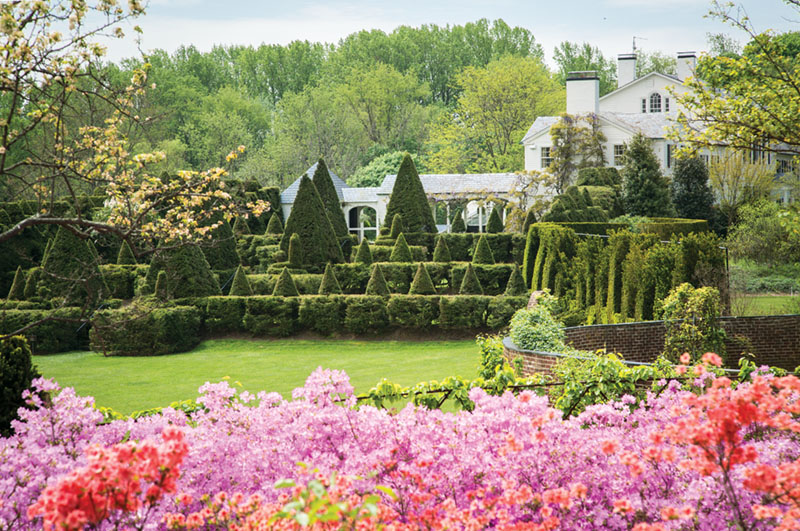
Photo by Helen Norman
As he drew plans for the garden, Harvey wanted stunning vistas like this one, looking over azaleas blooming in the orchard, across the Great Bowl to the terraces and manor house.
In 1929, Harvey Ladew was a very rich man living a very rich life. Heir to a Gilded Age family fortune (in leather), the native New Yorker was a friend to aristocrats, an Anglophile, and an international traveler. He loved art, beauty, culture, and a good joke. But most of all, he loved fox hunting.
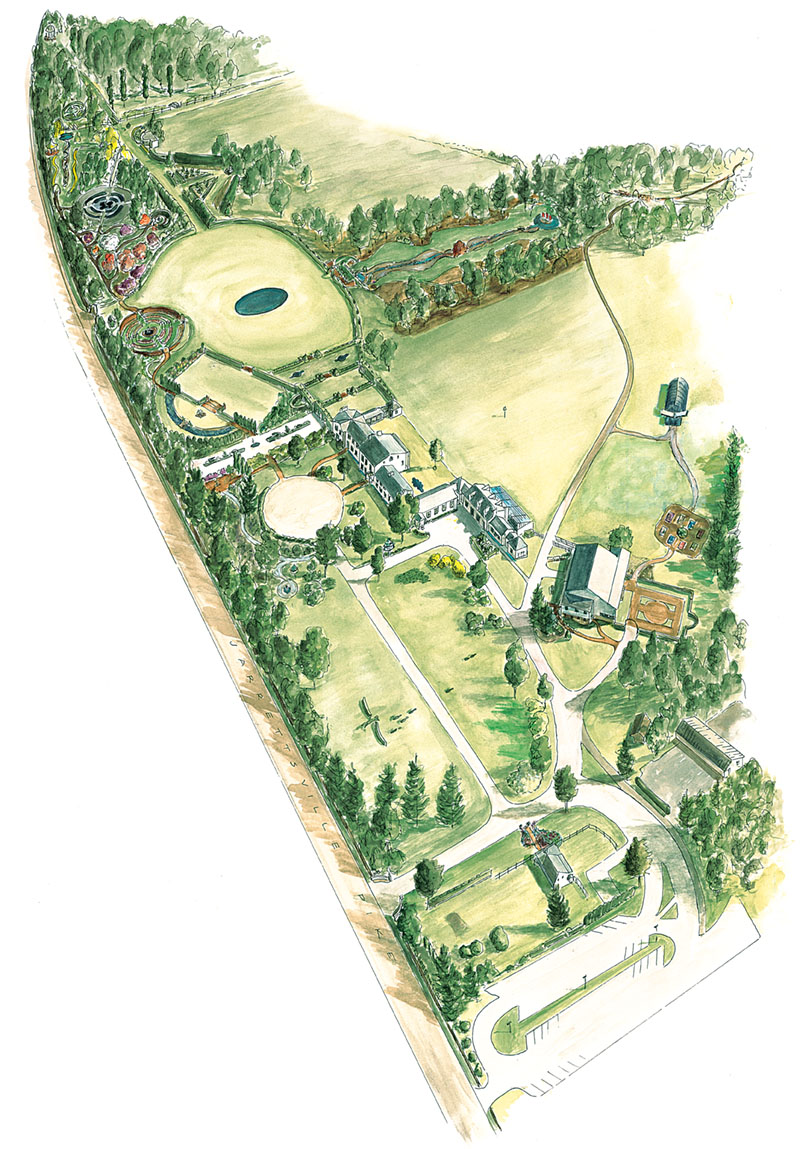
Illustration by John A. Robbins Jr.
A map shows Ladew’s 22 acres of formal gardens featuring 100 topiaries, which form the centerpiece of the property.
Once when he was hunting in England, he came across a topiary garden with the shape of a fox cut into the top of a hedge. Smitten, he was inspired to bring the idea back and create his own topiary garden in America. Like many hunters then and now, Harvey was a conservationist, a lover of unadulterated land and wary of increasing development (fox hunting, after all, requires wide parcels for the chase). On a hunting trip to northern Maryland, the 42-year-old fell in love with a 250-acre piece of property called Pleasant Valley Farm and bought it. The home—a farmhouse from the mid-1800s—had no water, no electricity, and no garden. Harvey set to work renovating the house and by 1937 was ready to begin the garden he’d been dreaming of.

Photo by Helen Norman
The Cottage Garden, the first garden you see upon arriving at Ladew, shows the exuberant nature of the property and its original owner.
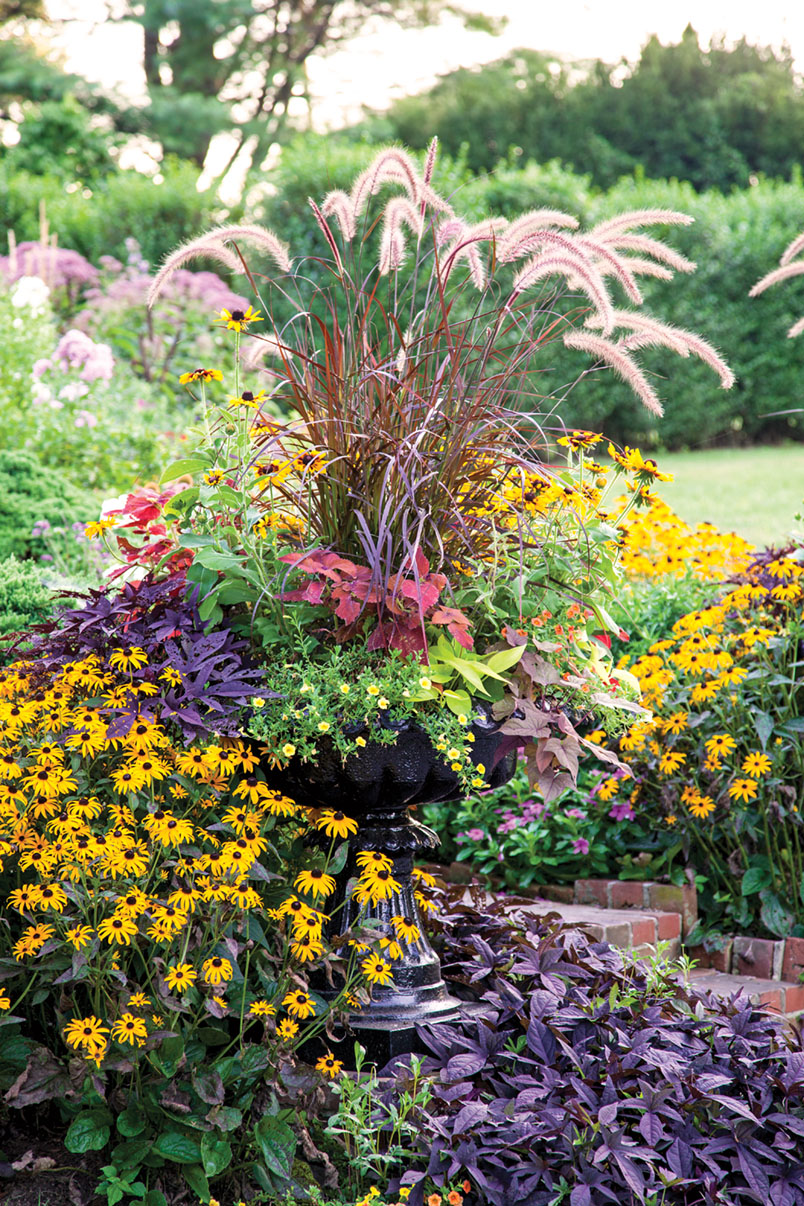
Photo by Helen Norman
An urn brimming with grasses and flowers nods to the warm, generous feel of the garden.
Though he could have afforded an army of gardeners, Harvey was a maverick and vowed to go it alone, save for the help of a local man who owned a funeral home, because, as Harvey argued, any man in that business “would know how to dig.” Heavily influenced by estates he’d admired in England and Italy, Harvey drafted 22 acres of formal gardens along two strong axes connected to 15 garden rooms, each featuring a singular theme, color, or plant. “When I first bought the farm,” he wrote, “I knew I would make a lot of mistakes. I made the mistakes, but they taught me the little I know about gardening.”
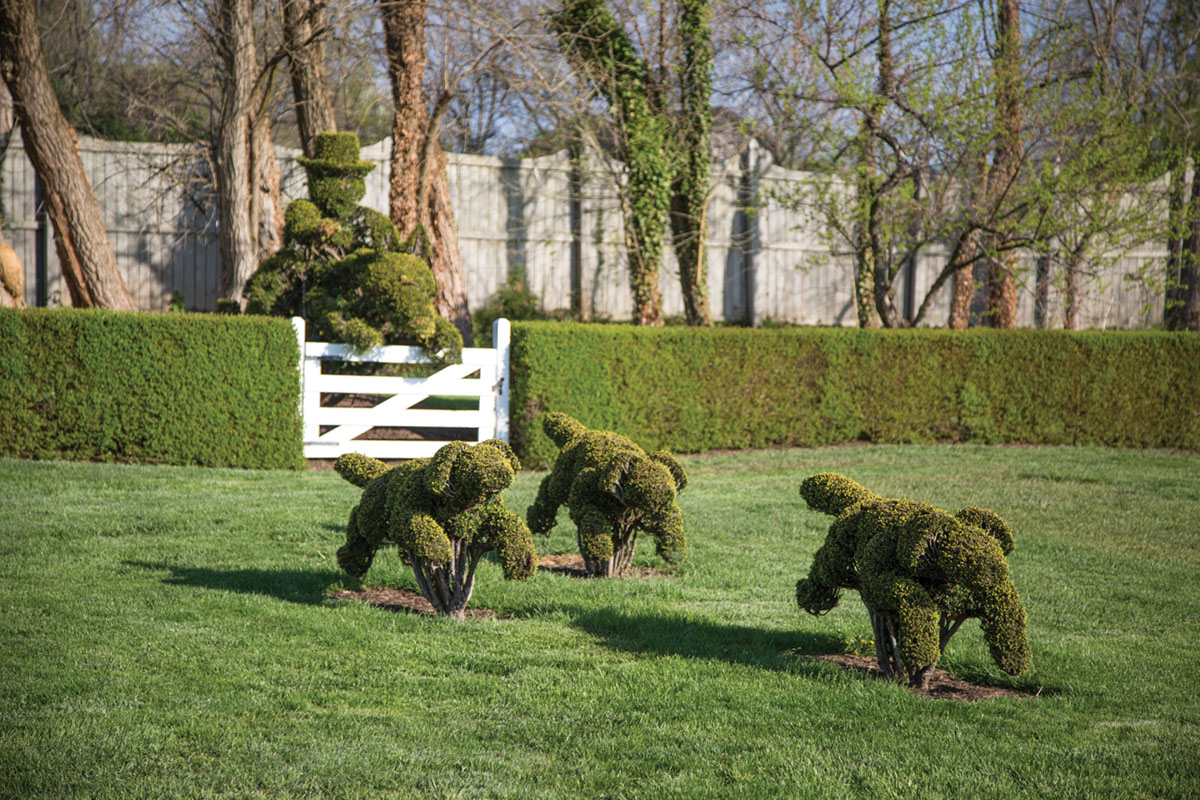
Photo by Ladew Staff
The iconic hunt scene, an homage to Harvey Ladew’s favorite pastime.
In fact, his lack of formal training, combined with his deep pockets and pure exuberance, created a special alchemy that resulted in a uniquely delightful garden. Though the gardens are formal in the sense that there is great care for the plantings and order in the delineation of space, the feel is sophisticated but not stuffy, with winks and smiles throughout. Not to be outdone by his English counterparts, Harvey created his own amazing topiary hunt scene complete with two horses and riders, hounds running ahead, and a fox that will forever be just out of reach. Topiary swans swim at the top of taxus (yew) hedges near the Great Bowl, a beautiful reflecting pond that served as Harvey’s personal swimming pool.
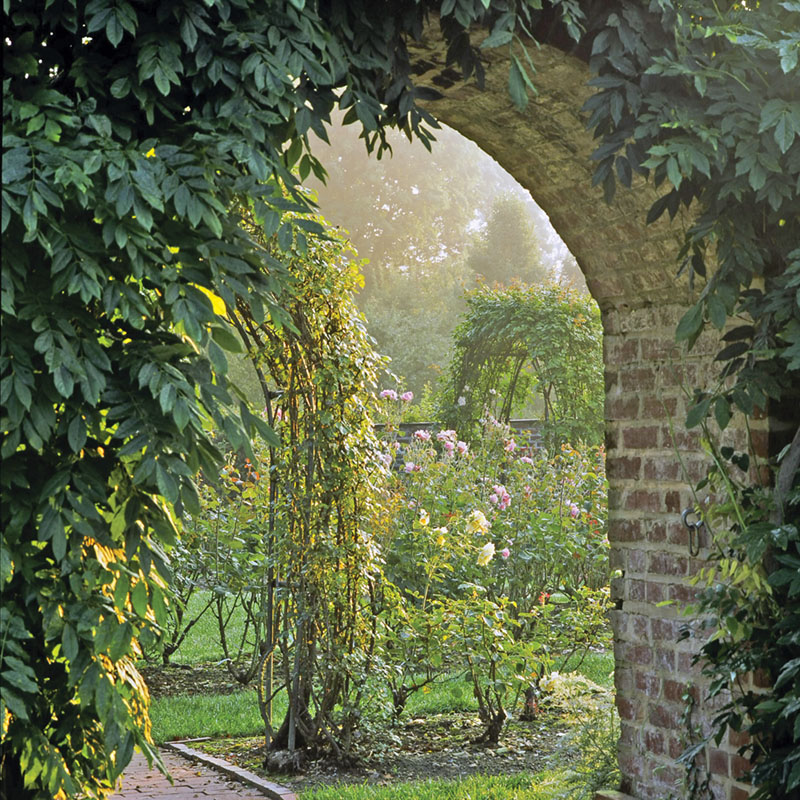
Photo by Erik Kvalsvik
A glimpse into the Rose Garden.
Ultimately he proved himself as an accomplished horticulturalist. As Emily Emerick, the longtime executive director of Ladew Gardens, recalls, “In many ways, Ladew was an early native-plant enthusiast. He loved going to nurseries and asking, ‘Do you have anything new and different? Give me 20 of them!’ ” After reading Rachel Carson’s seminal work Silent Spring, he embraced the idea of sustainability before it was in vogue and tried to steer away from the use of harmful pesticides.
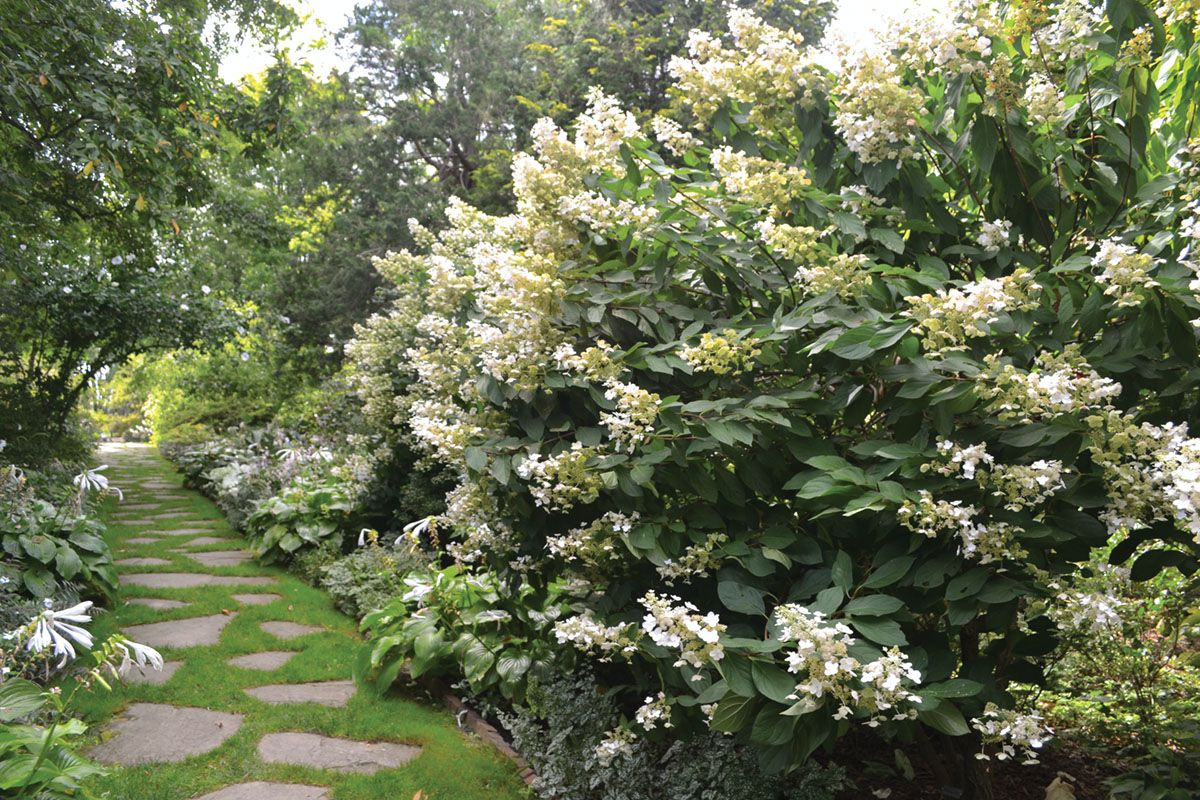
Photo by Ladew Staff
Hydrangeas anchor a pathway in the White Garden.
In its original conception, the gardens were planned to peak in spring and autumn, when Harvey would be in residence for the fox-hunting season. (His winter residence in Delray Beach, Florida, also had a large topiary: a whale.) When the gardens were turned into a nonprofit in 1971, the staff had to enhance the summer blooms around the property, so now the gardens are vibrant throughout spring, summer, and fall.
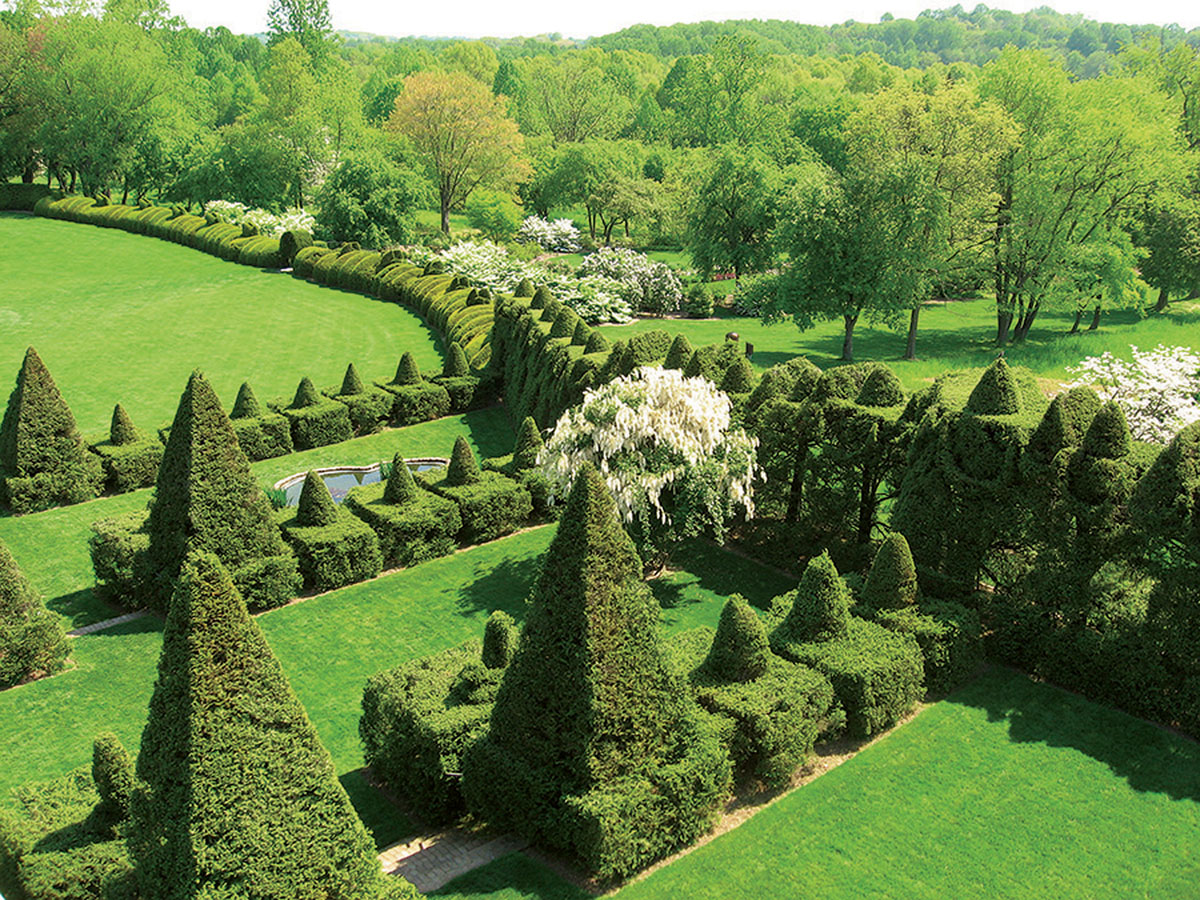
Photo by Ladew Staff
An aerial view of the Terrace Garden.
“This is an incredibly accessible and welcoming garden,” says Emily. “Everywhere you go, there’s a sense of humor, and we’ve tried to keep the whimsical intent. Ladew had a great appreciation for what gardens can be. It’s really a work of art, created by this interesting New Yorker who had a very privileged life and whose last words were, ‘I created the garden for people to enjoy it.’ ”
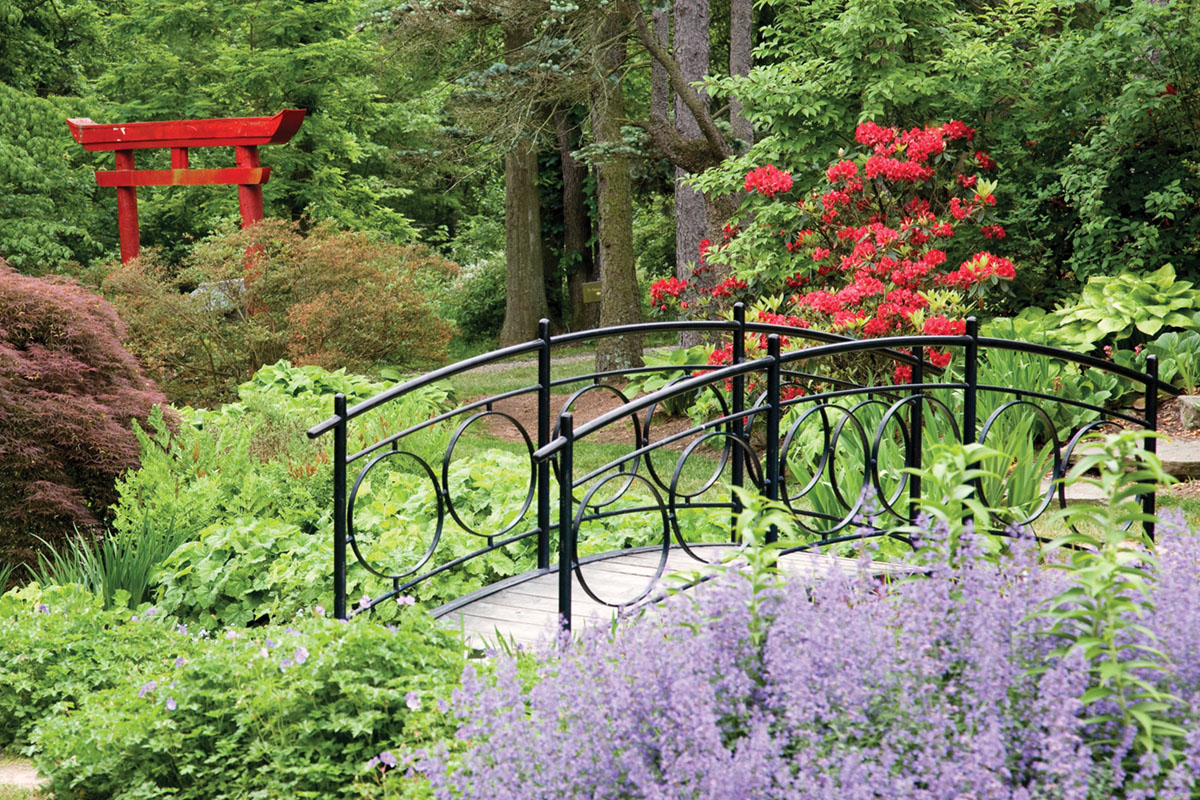
Photo by Helen Norman
The Iris Garden, with a torii gate in the background.
This year, as Ladew Gardens celebrates its 50th year open to the public, visitors can experience that legacy—the vistas, fanciful topiaries, and magical pockets of beauty that have delighted thousands before them. Though he died in 1976, Harvey’s wit still looms large on the place. You can see it in the towering topiaries overhead and in subtle little jokes left underfoot, including a series of stone steps where Harvey, a lifelong bachelor, had this ancient Chinese proverb etched: “If you would be happy for a week, take a wife. If you would be happy for a month, kill your pig. But if you would be happy all your life, plant a garden.”
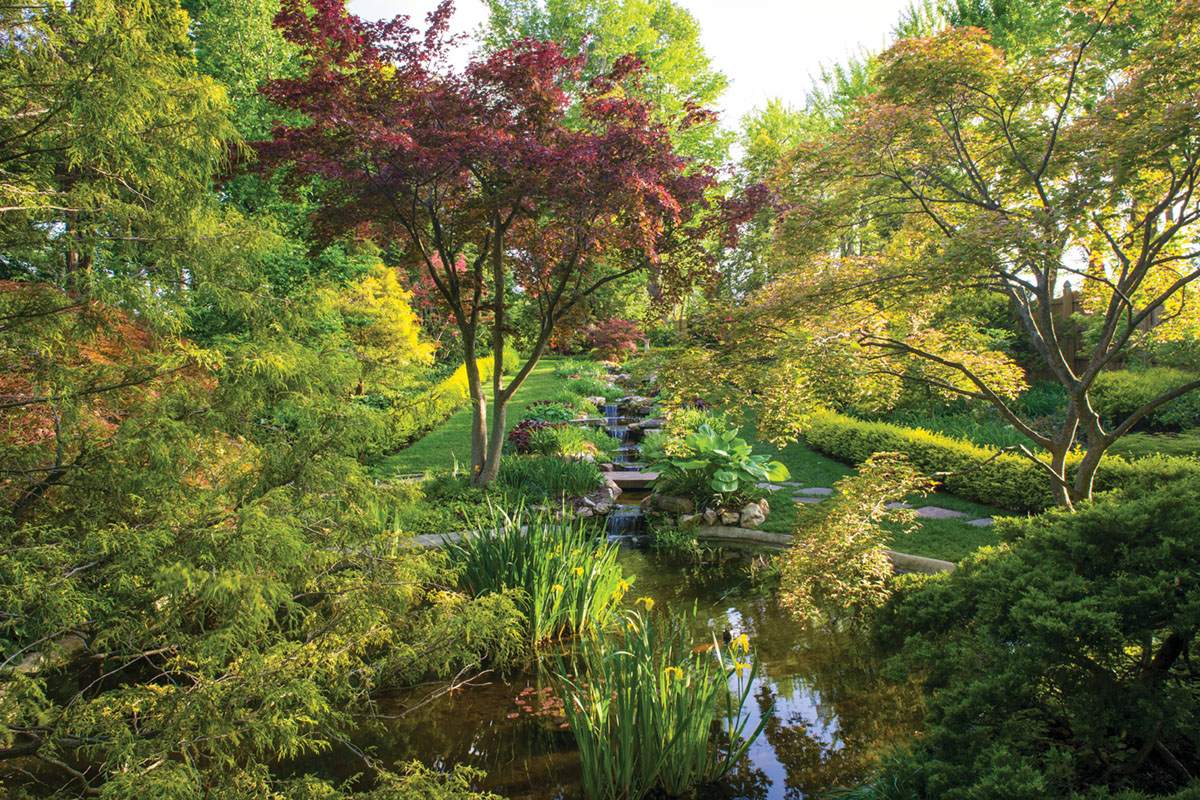
Photo by Helen Norman
The Yellow Garden, one of several color-themed garden rooms.
Ladew Topiary Gardens is open April 1—October1.
ladewgardens.com, Instagram, @ladewgardens.



